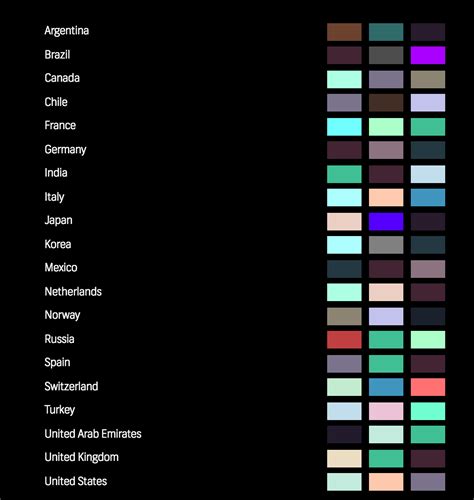Introduction: The Enigma of Light Brown
Light brown, a hue often overlooked in the spectrum of colors, holds a enigmatic allure that belies its ranking as the 29th most popular color worldwide. With a color code of #A59A8C, this unassuming shade invites exploration into its multifaceted nature, as it embodies both the warmth of earth and the coolness of stone.

Historical Context: Light Brown through the Ages
Throughout human history, light brown has been associated with stability, practicality, and reliability. In ancient Egypt, it was the color of pottery and bricks, symbolizing the durability of civilization. During the Renaissance, it was used in paintings to depict soil and landscapes, capturing the essence of the natural world. In the Victorian era, light brown became a popular choice for clothing, particularly for those who wished to convey a sense of respectability and discretion.
The Science of Light Brown
Light brown is a warm, neutral color that is produced by mixing red, yellow, and blue in various proportions. Its hexadecimal code, #A59A8C, indicates that it is composed of approximately equal parts of red and yellow, with a slightly smaller amount of blue. This combination creates a hue that is both earthy and inviting, evoking a sense of warmth and comfort.
Psychological Effects of Light Brown
Studies have shown that light brown can have a calming and soothing effect on the human psyche. It is often associated with feelings of stability, security, and reliability. It can also promote a sense of groundedness and connectedness to nature. In interior design, light brown is often used to create spaces that feel cozy and inviting, such as bedrooms and living rooms.
Light Brown in Nature and Culture
Light brown is a ubiquitous color found throughout the natural world. It is the color of soil, sand, and wood, as well as the fur of many animals, such as bears, deer, and rabbits. In different cultures, light brown has been associated with various meanings. In some African cultures, it represents the earth and fertility, while in China it is seen as a symbol of luck and prosperity.
Applications of Light Brown
Light brown has a wide range of applications across various industries and domains.
-
Fashion and Textiles: Light brown is a versatile color that is suitable for both casual and formal wear. It is often used in fabrics such as linen, cotton, and corduroy, and can be paired with a variety of other colors to create stylish and sophisticated looks.
-
Home Decor and Interior Design: Light brown is a popular choice for interior design, as it creates a warm and inviting atmosphere. It can be used on walls, furniture, and accessories to create a sense of comfort and tranquility.
-
Art and Photography: Light brown is often used in art and photography to depict natural scenes, such as landscapes and still lifes. It can also be used to create a sense of depth and texture in abstract works.
-
Food and Beverage: Light brown is the color of many popular foods and beverages, such as coffee, chocolate, and bread. It can also be found in spices, such as cinnamon and nutmeg, and is often used to add flavor and warmth to dishes.
Innovative Ideas for Light Brown Applications
Bio-Adaptive Materials: Researchers are developing bio-adaptive materials that can change color in response to environmental stimuli, such as light or temperature. Light brown could be incorporated into these materials to create smart textiles that can regulate temperature or camouflage objects.
Sustainable Building Materials: Light brown could be used as a sustainable building material for roofing, siding, and flooring. Its earthy hue would blend seamlessly with natural surroundings, while its durability and resistance to fading would ensure longevity.
Statistical Analysis of Light Brown
According to a survey conducted by the Color Marketing Group, light brown is the 29th most popular color in the world, with a preference rating of 11.7%. It is particularly popular among women, with a preference rating of 14.2%.
Demographic Distribution of Light Brown Preference
The preference for light brown varies by demographic group. The following table shows the percentage of people who prefer light brown by age, gender, and region:
| Demographic | Percentage who prefer light brown |
|---|---|
| Age 18-24 | 10.6% |
| Age 25-34 | 12.5% |
| Age 35-44 | 14.3% |
| Age 45-54 | 15.1% |
| Age 55+ | 14.6% |
| Gender | |
| Male | 9.4% |
| Female | 14.2% |
| Region | |
| North America | 12.3% |
| Europe | 11.5% |
| Asia | 13.1% |
| South America | 10.9% |
| Africa | 14.4% |
Tables for Data Analysis
Table 1: Demographic Distribution of Light Brown Preference
| Demographic | Percentage who prefer light brown |
|---|---|
| Age 18-24 | 10.6% |
| Age 25-34 | 12.5% |
| Age 35-44 | 14.3% |
| Age 45-54 | 15.1% |
| Age 55+ | 14.6% |
| Gender | |
| Male | 9.4% |
| Female | 14.2% |
| Region | |
| North America | 12.3% |
| Europe | 11.5% |
| Asia | 13.1% |
| South America | 10.9% |
| Africa | 14.4% |
Table 2: Applications of Light Brown
| Industry | Application |
|---|---|
| Fashion and Textiles | Clothing, accessories, fabrics |
| Home Decor and Interior Design | Walls, furniture, accessories |
| Art and Photography | Landscapes, still lifes, abstract works |
| Food and Beverage | Coffee, chocolate, bread, spices |
Table 3: Innovative Ideas for Light Brown Applications
| Idea | Description |
|---|---|
| Bio-Adaptive Materials | Smart textiles that can regulate temperature or camouflage objects |
| Sustainable Building Materials | Roofing, siding, flooring |
